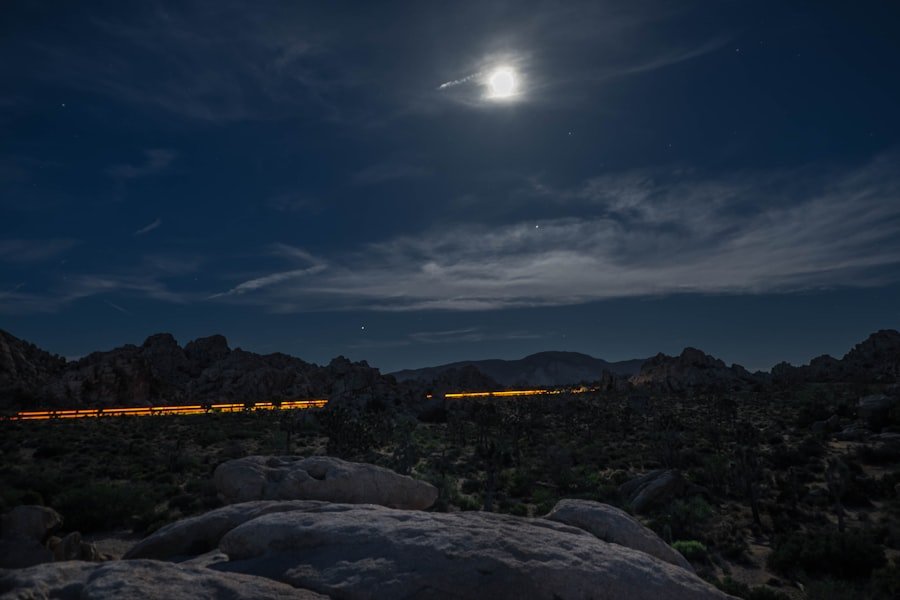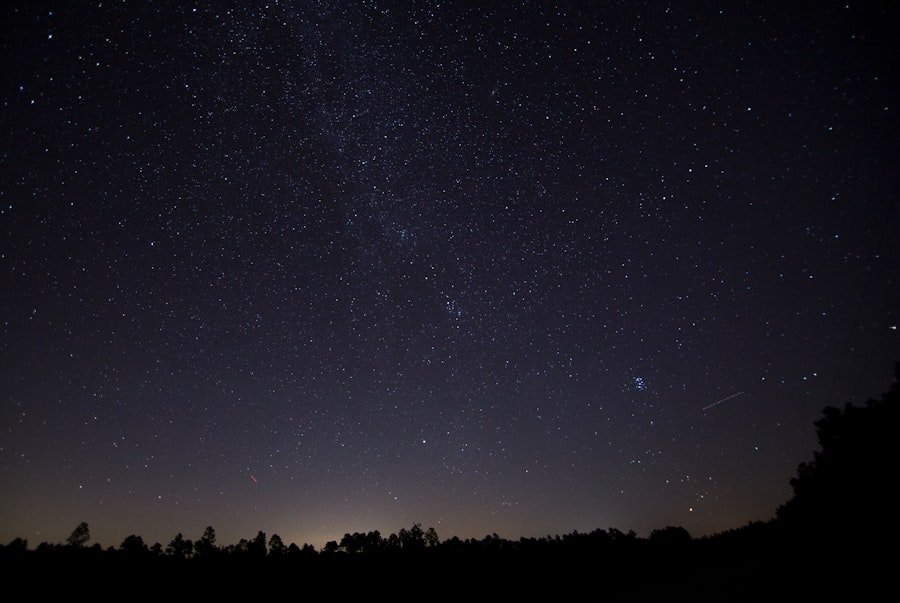The Northern Lights, or Aurora Borealis, are one of nature’s most mesmerizing phenomena, captivating observers with their ethereal beauty. This natural light display occurs primarily in high-latitude regions around the Arctic and Antarctic, resulting from the interaction between charged particles from the sun and the Earth’s magnetic field. When solar winds carry these particles toward Earth, they collide with gases in the atmosphere, such as oxygen and nitrogen.
This collision releases energy in the form of light, creating the stunning colors that dance across the night sky. The hues can range from greens and pinks to reds and purples, depending on the type of gas involved and the altitude at which the interactions occur. The science behind the Northern Lights is as fascinating as the display itself.
The phenomenon is most commonly observed in a band known as the auroral oval, which encircles the magnetic poles. During periods of heightened solar activity, such as solar flares or coronal mass ejections, the intensity and visibility of the auroras can increase significantly. This means that while the lights can be seen year-round, they are most vibrant during the winter months when nights are longer and skies are clearer.
Understanding these scientific principles not only enhances appreciation for this natural wonder but also aids photographers in planning their excursions to capture its beauty.
Key Takeaways
- The Northern Lights, also known as Aurora Borealis, are a natural phenomenon caused by the interaction of solar wind and the Earth’s magnetic field.
- When preparing for Northern Lights photography, make sure to dress warmly and bring a tripod to keep your camera steady during long exposures.
- Choosing the right location is crucial for capturing the Northern Lights, so look for areas with minimal light pollution and clear, dark skies.
- When setting up your iPhone camera for Northern Lights photography, use manual settings to adjust exposure, focus, and ISO for better results.
- To effectively capture the Northern Lights, use a wide-angle lens, set a long exposure time, and experiment with different compositions and angles.
Preparing for Northern Lights Photography
Timing is Everything
Potential photographers should familiarize themselves with the best times to view the auroras. The peak season typically spans from late September to early April, with optimal viewing conditions occurring during new moons when the sky is darkest. Additionally, checking local weather forecasts is crucial, as clear skies are essential for visibility. Websites and apps that track auroral activity can provide real-time updates on solar activity, helping photographers choose the best nights for their adventures.
Gearing Up
While professional cameras with interchangeable lenses are often recommended for capturing high-quality images of the Northern Lights, modern smartphones, particularly iPhones, have made significant strides in low-light photography capabilities. However, it’s essential to equip oneself with additional accessories such as tripods to stabilize shots during long exposures. A remote shutter release can also be beneficial to minimize camera shake.
Mastering the Techniques
Understanding how to use these tools effectively can make a substantial difference in the quality of photographs taken under challenging lighting conditions.
Choosing the Right Location

Selecting an ideal location for photographing the Northern Lights is a critical step that can greatly influence the outcome of your images. Areas far removed from urban light pollution are preferable, as artificial lights can obscure the delicate colors of the auroras. National parks and remote wilderness areas in countries like Norway, Sweden, Finland, Canada, and Alaska are renowned for their breathtaking views of the Northern Lights.
For instance, locations such as Fairbanks in Alaska or Tromsø in Norway are popular among aurora chasers due to their geographical positioning within the auroral oval. In addition to avoiding light pollution, photographers should also consider the landscape surrounding their chosen location. Incorporating elements such as mountains, trees, or bodies of water can add depth and interest to photographs.
For example, capturing a reflection of the auroras on a still lake can create a stunning visual effect that enhances the overall composition. Researching potential sites ahead of time can help identify vantage points that offer both a clear view of the sky and interesting foreground elements to enrich your photographs.
Setting Up Your iPhone Camera
| Aspect | Details |
|---|---|
| Resolution | Choose from various options such as 720p, 1080p, or 4K for video recording |
| Exposure | Adjust the exposure level to control the brightness of your photos |
| Focus | Tap on the screen to set the focus point for your photos |
| White Balance | Manually adjust the white balance for different lighting conditions |
| Grid | Enable grid lines to help compose your shots using the rule of thirds |
While traditional cameras have long been favored for astrophotography, iPhones have become increasingly capable of capturing stunning images of the Northern Lights with proper setup and technique. To begin with, ensure that your iPhone is updated to the latest operating system to take advantage of any enhancements in camera performance. The Night mode feature available on newer iPhone models is particularly useful for low-light photography, allowing for longer exposure times without significant motion blur.
To set up your iPhone for Northern Lights photography, start by enabling Night mode if your device supports it. This feature automatically adjusts exposure settings based on available light, allowing you to capture more detail in dark environments. Additionally, consider using third-party camera apps that offer manual controls over settings such as ISO and shutter speed.
Apps like Halide or ProCam allow users to fine-tune their camera settings for optimal results. A longer exposure time will help capture more light from the auroras, but it’s essential to balance this with stability; using a tripod is crucial to prevent blurriness from hand movement during longer exposures.
Capturing the Northern Lights Effectively
When it comes to capturing the Northern Lights effectively with your iPhone, timing and technique play pivotal roles. As auroras can be unpredictable in terms of intensity and movement, patience is key. Observing how the lights shift and change can help you anticipate when to take your shots.
It’s advisable to take multiple photos over a span of time rather than relying on a single shot; this increases your chances of capturing a particularly vibrant display. Composition is another critical aspect of photography that should not be overlooked. Utilizing techniques such as leading lines or framing can enhance your images significantly.
For instance, positioning yourself so that trees or mountains frame the auroras can create a more dynamic photograph. Experimenting with different angles and perspectives will yield varied results; don’t hesitate to move around your location to find unique compositions that highlight both the lights and your surroundings. Additionally, consider adjusting your exposure settings manually if you’re using a third-party app; starting with an exposure time of around 10-15 seconds is often effective for capturing bright displays.
Editing and Enhancing Northern Lights Photos

Post-processing is an essential step in enhancing Northern Lights photographs taken with an iPhone. While many images may look stunning straight out of the camera, editing can help bring out details that may not be immediately visible due to low light conditions. Applications like Adobe Lightroom or Snapseed offer powerful editing tools that allow users to adjust exposure, contrast, saturation, and sharpness effectively.
One common technique is to increase contrast slightly to make the colors pop against a dark sky; however, caution should be exercised not to overdo it, as this can lead to unnatural-looking images. Adjusting white balance can also significantly impact how colors appear; experimenting with different settings can help achieve a more accurate representation of what was seen in person. Additionally, cropping can help improve composition by removing distracting elements from the frame or focusing more closely on specific areas of interest within the photograph.
In conclusion, photographing the Northern Lights is an exhilarating experience that combines an appreciation for nature’s beauty with technical skill in photography. By understanding this natural phenomenon, preparing adequately, choosing optimal locations, setting up your iPhone camera correctly, capturing images effectively, and enhancing them through editing, photographers can create stunning representations of one of Earth’s most awe-inspiring displays. Whether you are a seasoned photographer or a novice using an iPhone for the first time, these steps will help you embark on a rewarding journey into capturing the magic of the Aurora Borealis.
If you’re looking to capture the beauty of the northern lights on your iPhone, you may want to check out this article on privacy policy. This article provides tips and tricks on how to adjust your camera settings to get the best possible shots of the aurora borealis. By following these guidelines, you’ll be able to take stunning photos of the northern lights that you can cherish for years to come.
FAQs
What are the northern lights?
The northern lights, also known as aurora borealis, are a natural light display in the Earth’s sky, predominantly seen in high-latitude regions around the Arctic and Antarctic.
Can I take photos of northern lights on my iPhone?
Yes, it is possible to capture photos of the northern lights using an iPhone, especially with the newer models that have improved camera capabilities.
What settings should I use on my iPhone to capture northern lights?
To capture the northern lights on your iPhone, you can use the “Night Mode” feature if available, or manually adjust the exposure and ISO settings to allow for longer exposure times and increased sensitivity to light.
Where is the best location to take photos of northern lights with an iPhone?
The best locations to capture photos of the northern lights with an iPhone are in areas with minimal light pollution and clear, dark skies, such as remote areas away from city lights.
What time of year is best for photographing northern lights with an iPhone?
The best time of year to photograph the northern lights with an iPhone is during the winter months when the nights are longer and the skies are darker in high-latitude regions.
Are there any apps or accessories that can help with photographing northern lights on an iPhone?
There are several photography apps available for iPhones that can assist with capturing the northern lights, as well as accessories such as tripods and external lenses to improve stability and image quality.
